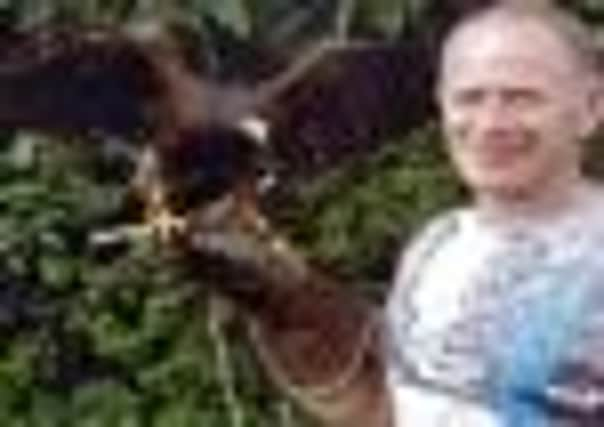My Passion with Craig Dearman: Fascination led to an incredible bond with a feathered friend


People at work are always taking the mickey out of me for talking about my bird. But when they hear the full story, they realise it’s the feathered variety, not the other type.
It all started 13 years ago when I just happened to talk to someone who owned a bird of prey, and I was just fascinated by it all.
Advertisement
Hide AdAdvertisement
Hide AdI was always interested in the noble sport of falconry. It’s an ancient sport that dates back as far as around 700 BC which developed into a popular sport and status symbol.
I’d never had the opportunity to have a go but then I met this man and he really inspired me.
Having contacted a registered falconer, I first got my bird, a male Harris hawk, when my family and I moved to a bigger house. It is essential you have the correct housing, food and equipment before your bird arrives. This house had a garden with ample room for a “mews” – the correct accommodation for a falconry bird is not called an aviary.
Harris hawks are medium-large birds of prey originating from the United States, Chile and Argentina. When keeping one you have to remember we are talking about a live creature, which is essentially wild, even though they are domestically bred.
Advertisement
Hide AdAdvertisement
Hide AdFalcons are also used nowadays for more practical reasons such as pest control, making use of the natural relationship between raptors and their prey.
My 14-year-old son, who has developed a strong interest in falconry, cleverly decided we would call him Harry because he’s a Harris hawk.
Training is a surprisingly short process. A Harris hawk can be trained to fly totally free and return to the falconer in about three weeks.
When you get a hawk you have a 21-day period where you aim to create a bond between yourself and the bird. The first seven days are for the bird to get used to the new environment they have been put in, while the next seven days concentrate on getting the bird to sit comfortably on your hand.
Advertisement
Hide AdAdvertisement
Hide AdThis is a very timely process, but one that you have to ensure you stick to, to make your bond as strong as possible.
The last seven days is the real test. Your aim is to try to get the bird to fly towards you from a distance – with the end point being a reward of course. The bond I made was incredible, and by the end I was able to get my hawk to fly towards me with the sound of a whistle.
Of course you make mistakes, but the experience of the sport is a continuous learning curve for both the falconer and the bird.
I chose not to compete in competitions because I see my passion for falconry as a way of relaxation and stress relief.
When I’m out with Harry, it’s just us together without anything or anyone else.